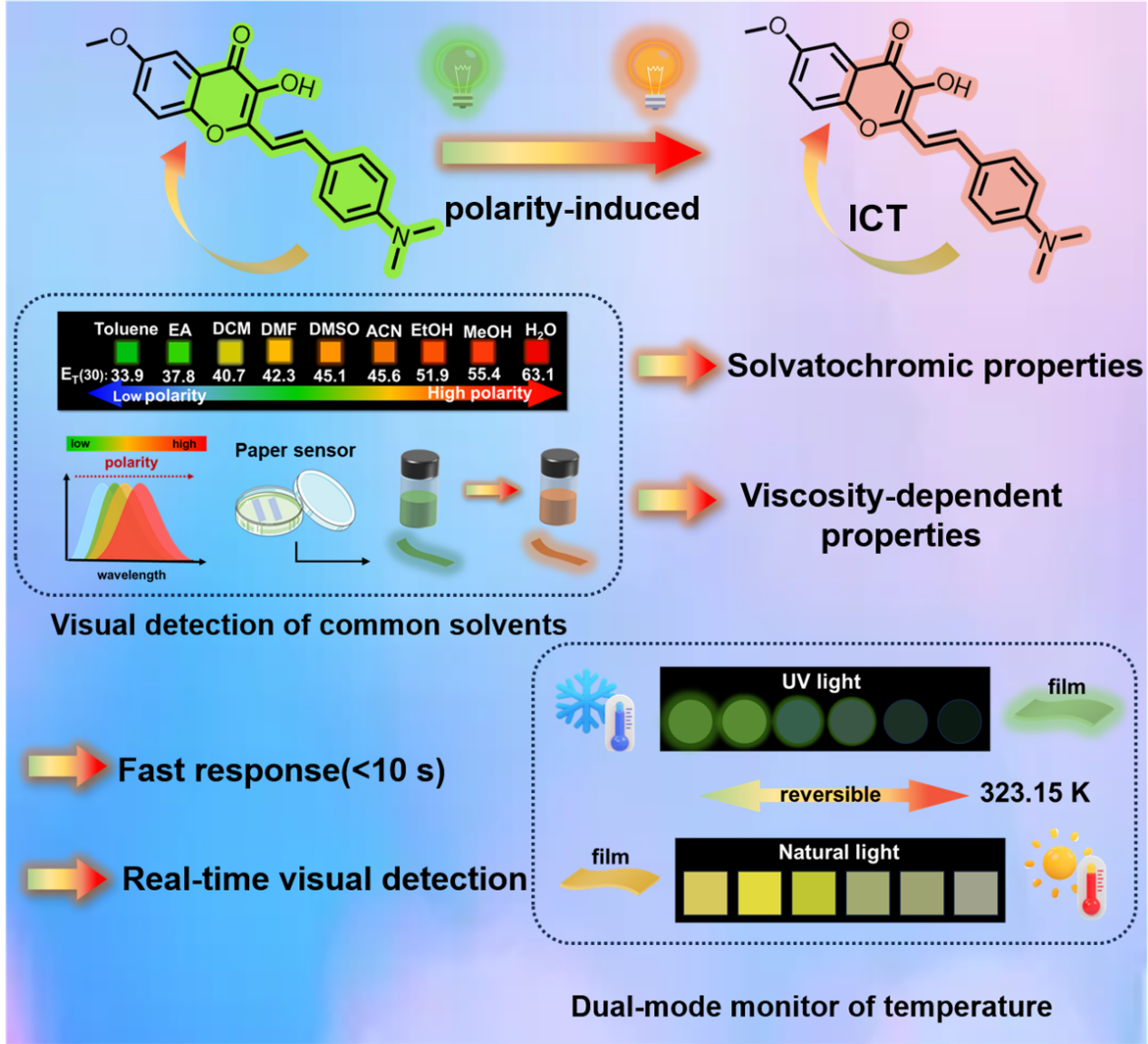
Recently, a research team led by Professor JIANG Changlong at the Institute of Solid State Physics, the Hefei Institutes of Physical Science of the Chinese Academy of Sciences, has developed a new donor-acceptor (D-A) type fluorescent dye called AFL. This dye changes its fluorescence color and intensity depending on solvent polarity and temperature, making it useful for quick visual monitoring.
The research findings have been published in Advanced Functional Materials.
D-A fluorescent dyes are important for sensors because they can detect specific molecules or environmental changes. However, many current D-A dyes face issues like fluorescence quenching under certain conditions.
In this study, the researchers created AFL, which shows different fluorescence responses depending on solvent polarity. In highly polar solvents, AFL's fluorescence emission shifts, allowing for the detection of solvent polarity.
The team also created a composite material, AFL@TA, by combining AFL with tetradecanoic acid (TA). This composite changes fluorescence intensity based on temperature and viscosity. As temperature increases, the viscosity decreases, leading to lower fluorescence intensity. AFL@TA composite films, which are flexible and stable, were also developed as a potential temperature sensor. These films showed a clear linear relationship between temperature and fluorescence intensity, making them useful for real-time visual temperature detection in various conditions.
This research opens up new possibilities for D-A fluorescent sensing materials and expands their applications in visual sensing technology.

The synthesis route of the donor–acceptor fluorescent dye AFL and the design idea and response mechanism of the AFL-based fluorescencesensor. (Image by LIU Anqi)